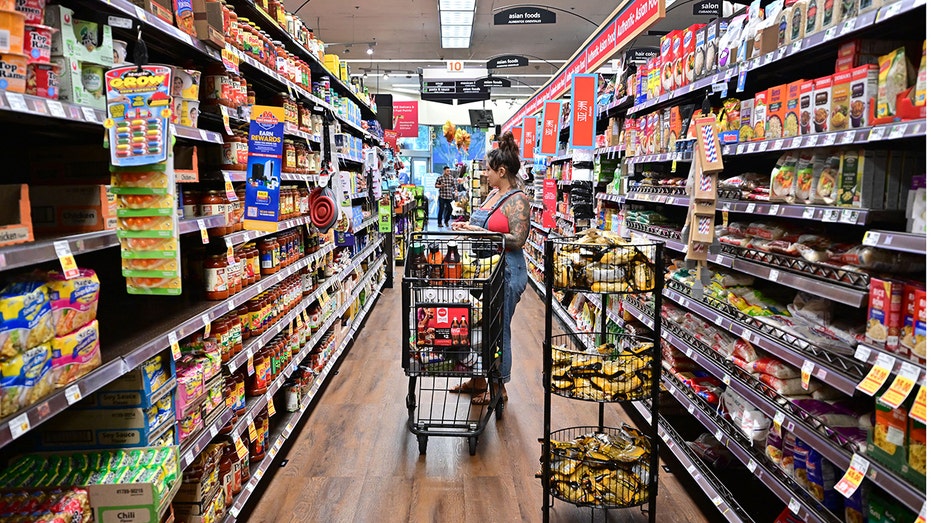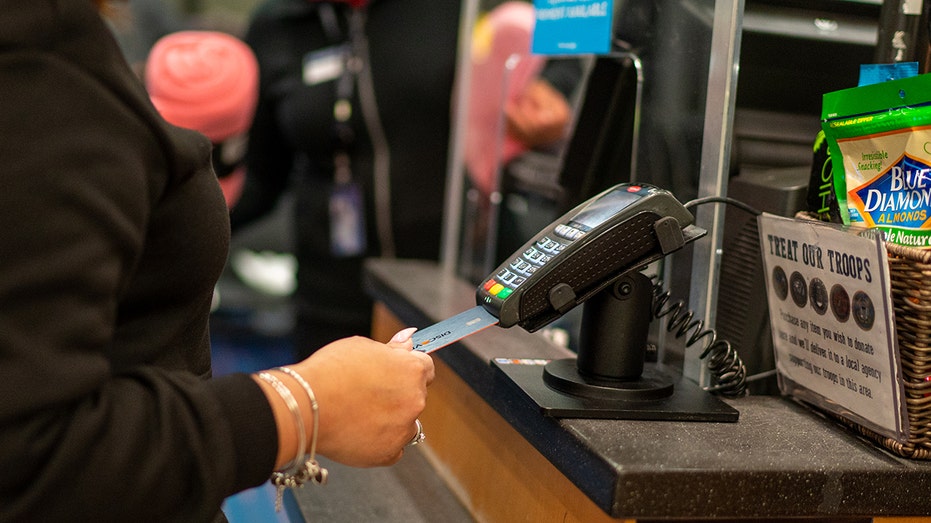High inflation is costing Americans an extra $1K a month
High inflation costing Americans an extra $1,069 a month compared with 3 years ago
Food inflation remains strong
Inflation is falling but buying food can still be expensive. Grocery prices surged 21% in the last three years, surpassing the overall 18% pace of inflation during that same time period, according to the Bureau of Labor Statistics.
Inflation is once again gaining steam, forcing the average American to shell out a lot more money for everyday necessities.
The typical U.S. household needed to pay $227 more a month in March to purchase the same goods and services it did one year ago because of still-high inflation, according to calculations from Moody's Analytics chief economist Mark Zandi shared with FOX Business.
Americans are paying on average $784 more each month compared with the same time two years ago and $1,069 more compared with three years ago, before the inflation crisis began.
The analysis suggests that while inflation has fallen from the highs of mid-2022, many families have yet to see material relief.
JAMIE DIMON WARNS INFLATION, INTEREST RATES MAY REMAIN ELEVATED

People shop in the food section of a retail store in Rosemead, California, on Jan. 19. (Frederic J. Brown/AFP via Getty Images / Getty Images)
"Inflation has not just stalled, but it is moving in the wrong direction," said Lisa Sturtevant, chief economist at Bright MLS.
The Labor Department said Wednesday that the consumer price index (CPI), a broad measure of the price of everyday goods including gasoline, groceries and rent, rose 0.4% in March from the previous month. Prices climbed 3.5% from the same time last year, above the 3.2% figure recorded in February.
However, when compared with January 2021, shortly before the inflation crisis began, prices remain up a stunning 18.94%.
Inflation has created severe financial pressures for most U.S. households, which are forced to pay more for everyday necessities like food and rent. The burden is disproportionately borne by low-income Americans, whose already-stretched paychecks are heavily impacted by price fluctuations.
WHY ARE GROCERIES STILL SO EXPENSIVE?
The CPI is still running well above the typical pre-pandemic rate, and the cost of necessities like food, rent and child care remains far more expensive than just one year ago.
Housing and gasoline costs were the biggest drivers of inflation last month, accounting for more than half of the total monthly increase.

A woman shops for groceries at a supermarket in Monterey Park, California, on Oct. 19, 2022. (Frederic J. Brown/AFP via Getty Images / Getty Images)
Rent costs rose 0.5% for the month and are up 5.7% from the same time last year. Rising rents are concerning because higher housing costs most directly and acutely affect household budgets. Gasoline prices, meanwhile, jumped 1.7% over the course of March. They are up 1.3% when compared with the same time last year.
Other price gains also proved persistent in March.
Food prices, a visceral reminder of inflation for many Americans, ticked up 0.1% over the course of the month. In total, the cost of groceries is up 1.2% from the same time last year and up a stunning 21% when compared with January 2021, shortly before the inflation crisis began.
Auto insurance costs also jumped for the fifth straight month, rising 22.2% from the same time last year.
"This was a painful report with few bright spots for consumers," said Robert Frick, a corporate economist with Navy Federal Credit Union.
GET FOX BUSINESS ON THE GO BY CLICKING HERE
As they spend more on everyday goods, Americans are burning through their savings and are increasingly turning to credit cards to cover those basic expenses.

Americans are increasingly turning to credit cards to cover basic expenses. (Robert Nickelsberg/Getty Images / Getty Images)
Credit card debt surged to a new record high at the end of December, according to recent New York Federal Reserve data.
In the three-month period from October to December, total credit card debt rose to $1.13 trillion, an increase of $50 billion, or 4.6% from the previous quarter, according to the report. It marks the highest level on record in Fed data dating back to 2003 and the 10th consecutive annual increase.
